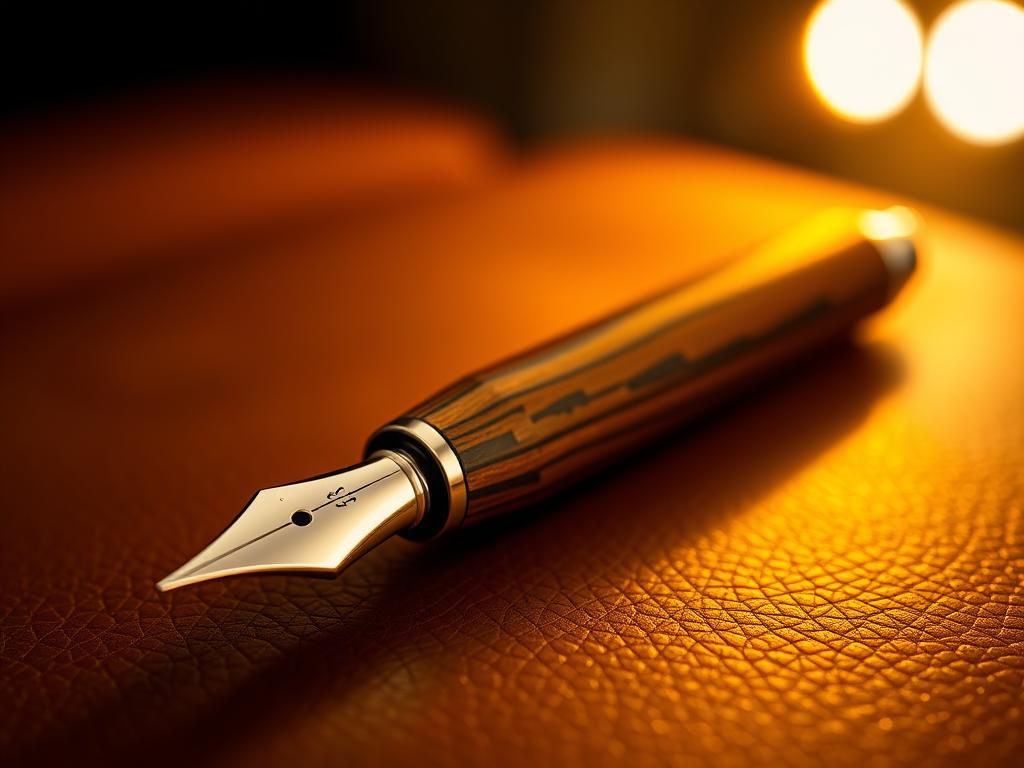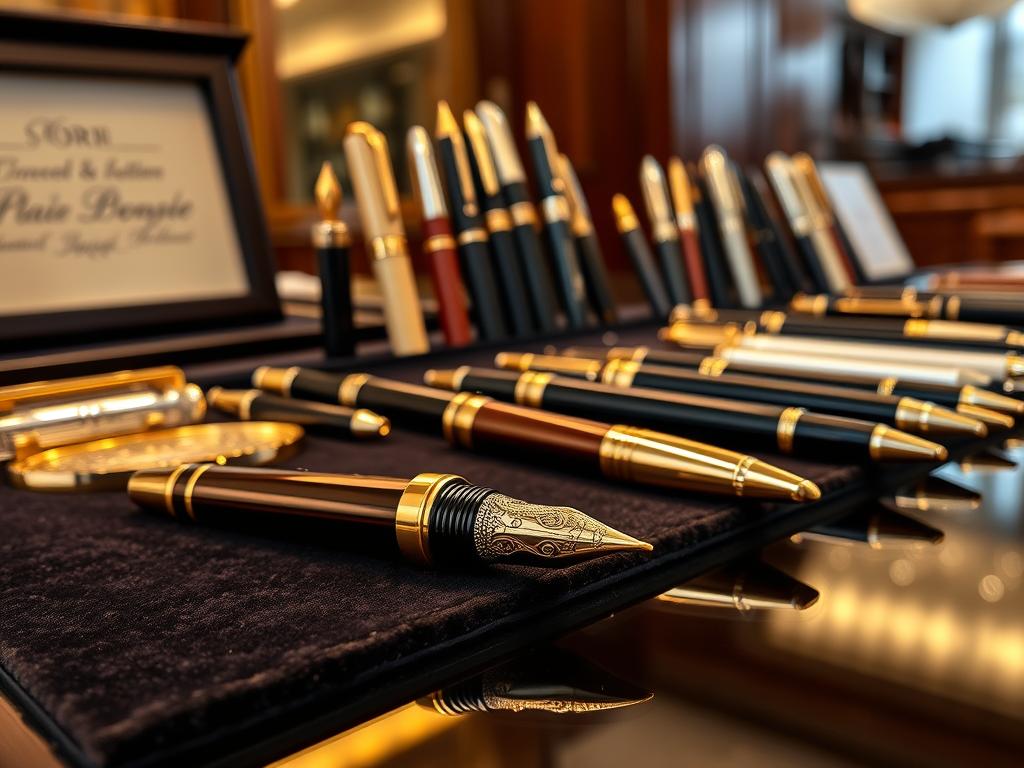In a world where screens dominate communication, handwritten notes are making a surprising comeback. This revival has sparked fresh enthusiasm for luxury writing instruments, turning them into sought-after treasures for enthusiasts. Auctions dedicated to these items now rival events for fine art and jewelry, blending history, craftsmanship, and exclusivity.
For collectors, a single lot might include rare fountain pens from the 1920s or modern limited editions adorned with precious metals. Brands like Montblanc and Namiki dominate this space, with pieces often fetching thousands at auction. Sotheby’s recent capsule collection highlights how accessible these events have become, offering no-reserve bids to attract newcomers.
What drives this passion? It’s more than functionality. Each piece tells a story—whether it’s a Parker model used by historical figures or a maki-e lacquered design crafted by a single artisan. Millennials, in particular, are embracing handwriting as a mindful escape, fueling demand for tools that blend artistry with purpose.
Key Takeaways
- Luxury pens are now collectibles, competing with art and jewelry in auction value.
- Auction lots range from vintage finds to contemporary limited editions.
- Brands like Montblanc and Namiki lead the market with unique craftsmanship.
- Millennials are driving renewed interest in handwriting and premium tools.
- No-reserve auctions make high-end pens accessible to new collectors.
Introduction to Pen Auctions
Gold nibs and handcrafted barrels are transforming auction catalogs into treasure troves for enthusiasts. These events showcase writing instruments that blend artistry with practicality, from sleek fountain designs to polished ballpoint models. Premium materials like 18-karat gold accents elevate their appeal, turning everyday tools into heirlooms.
Why do collectors compete fiercely for these items? Special edition releases often feature limited production runs or historical significance. A 2023 report noted that gold-plated fountain pens accounted for 62% of top auction sales, proving their enduring demand. As one expert remarked:
“It’s not just about writing—it’s owning a slice of craftsmanship history.”
Newcomers might wonder how these differ from standard options. Consider these advantages:
- Gold components ensure durability and a luxurious feel
- Vintage fountain pens often appreciate over time
- Limited editions gain value through rarity
Ballpoint styles shouldn’t be overlooked. Modern iterations with gemstone details or collaborations attract younger bidders. Whether you’re drawn to timeless elegance or contemporary flair, auctions offer a gateway to pen collecting’s vibrant world.
Understanding Pen Auctions: A Buyer’s Guide
Collectors often seek pens that tell a story through their design and craftsmanship. Sotheby’s recent sales highlight this trend, with items like Montblanc’s Writers Edition Hemingway fetching over $30,000. These pieces aren’t just tools—they’re miniature artworks. Features like enamel detailing or an original cap can double a pen’s value, especially when tied to iconic brands.
Purpose and Scope for Collectors
High-quality fountain pens dominate auction interest due to their precision and heritage. A Patron of Art series piece, for example, might feature hand-painted motifs on 18-karat gold. Limited editions thrive on scarcity—only 88 units of Montblanc’s JFK Special Edition were produced, creating instant demand.
Key factors to evaluate before bidding:
- Enamel or lacquer finishes signal meticulous craftsmanship
- Original caps and nibs preserve authenticity
- Established brands like Namiki ensure resale value
| Feature | Impact on Value | Example |
|---|---|---|
| Enamel Detailing | Increases by 40-60% | Montblanc Great Characters |
| Original Cap | Adds 25% premium | Vintage Parker Duofold |
| Limited Edition Status | Doubles initial estimates | Patron of Art Annual Release |
Newcomers should focus on verified auction histories and condition reports. As one specialist notes:
“A pristine fountain pen with documentation outperforms generic lots every time.”
Whether pursuing a rare find or modern masterpiece, understanding these elements turns bidding into strategic collecting.
Navigating the Auction Process for Pens
Bidding on luxury pens combines strategy and passion, turning each event into a calculated pursuit. Whether competing for gold plated masterpieces or stainless steel rarities, knowing the rules of engagement separates casual buyers from savvy collectors.
Auction Formats and Bidding Strategies
Live auctions often feature fast-paced bidding wars, while online platforms allow timed offers. No-reserve sales create opportunities for bargains, as items sell regardless of price. For limited editions, experts recommend setting strict limits—these pieces often spark fierce competition.
Batch sales influence outcomes. When a number of similar pens appear together, prices may dip slightly. Focus on single lots for high-demand items like 18-karat fountain pens. As one auctioneer notes:
“Winning requires patience. Let others chase early lots—save your budget for prime selections.”
How to Track Auction Listings and Sales
Specialized apps now alert users to upcoming events featuring specific brands or materials. Reviewing past sales data helps identify trends—for example, gold plated models typically outperform matte finishes by 15-20%.
Key tracking tips:
- Bookmark auction house calendars for limited editions
- Compare condition reports across platforms
- Note production numbers in item descriptions
Real-time dashboards show bid histories, revealing when competitors drop out. This data transforms writing tool auctions from guessing games into informed investments.
Key Factors Influencing Pen Value
In the realm of collectibles, writing instruments stand apart as functional art pieces. Their worth hinges on elements that blend technical skill with storytelling—factors like a nib shaped by master engravers or a hand-carved barrel. Auction data reveals pens with these traits sell for 50-70% above base estimates.

Craftsmanship and Authenticity
Artisanal details separate top-tier instruments from mass-produced options. Brands like OMAS elevate value through techniques such as:
- Hand-polished 18-karat gold nibs
- Limited production runs (under 100 units)
- Original sketches or maker signatures
A 1930s OMAS Extra Lucens fetched $28,000 in 2023 due to its unreplicated celluloid pattern. As one curator notes:
“Authenticity isn’t optional—it’s the price tag’s backbone.”
Materials, Condition, and Presentation
High-end materials like urushi lacquer or titanium alloy signal lasting value. Scratches or ink residue can slash bids by 30%, while mint-condition items with original boxes command premiums. Consider this comparison:
| Feature | Price Impact | Example |
|---|---|---|
| Gold nib | +40% | Montblanc Meisterstück |
| Flawless resin | +25% | Visconti Homo Sapiens |
| Complete packaging | +35% | Pelikan Souverän |
Collectors prioritize instruments that balance rarity with preservation. A pristine hand-finished model in its original case isn’t just a tool—it’s a legacy.
Exploring Diverse Pen Types and Their Features
The artistry behind premium writing tools transforms everyday instruments into coveted collectibles. From fluid fountain designs to sleek rollerball models, each category serves distinct preferences while sharing a commitment to craftsmanship. This variety fuels a dynamic market, where functionality meets artistic expression.
Fountain, Ballpoint, and Rollerball Comparisons
Fountain pens reign supreme in the art world for their customizable nibs and ink flow control. Brands like Pelikan craft 18-karat gold nibs that adapt to writing styles over time. Ballpoints prioritize convenience—think Montblanc’s LeGrand series with pressurized cartridges for smooth lines on any surface.
Rollerballs bridge both worlds. They use liquid ink for effortless gliding but avoid the maintenance of fountain models. Aurora’s Optima collection exemplifies this balance, merging Italian design with practical refill systems.
| Type | Ink System | Design Focus |
|---|---|---|
| Fountain | Refillable reservoir | Nib customization |
| Ballpoint | Oil-based cartridge | Portability |
| Rollerball | Water-based cartridge | Writing smoothness |
Limited Editions, Gold Plated, and Luxury Accents
Exclusive releases dominate high-end sets, often featuring rare materials. Sotheby’s 2023 sale included a Namiki Emperor maki-e model with 24-karat gold plating—one of 30 ever made. Such items appreciate faster than standard lines due to scarcity.
Designers elevate luxury through unexpected details:
- Guilloché engraving on Visconti’s Divine Comedy series
- Titanium alloy accents in Graf von Faber-Castell’s Intuition line
- Gemstone clips on Caran d’Ache’s limited editions
As a curator at a New York gallery notes:
“Collectors don’t just buy a writing tool—they acquire wearable art.”
This mindset explains why gold-plated finishes and artisan collaborations command premium prices worldwide.
Strategies for Successful Auction Bidding
Securing a prized collectible requires more than luck—it demands a game plan. Seasoned participants know that preparation separates memorable wins from costly oversights. Auction records show bidders who research materials, verify condition, and set firm limits achieve better outcomes.

Preparing and Setting a Budget
Start by exploring an item’s stories. A 1920s fountain model owned by a novelist might carry historical weight, boosting its appeal. Review high-resolution photos for details like scratches or replaced parts. Original packaging, such as a branded box, often adds 20-30% to resale value.
Consider these priorities when allocating funds:
- Metal accents (gold, platinum) increase durability and prestige
- Flawless condition ensures long-term investment potential
- Complete documentation verifies stories and provenance
| Factor | Budget Impact | Example |
|---|---|---|
| Rare Materials | +35% | 18k gold nib |
| Original Box | +25% | Vintage Montblanc case |
| Artisan Accents | +40% | Hand-engraved cap |
One auctioneer advises:
“Treat your maximum bid like a firewall—cross it, and you risk regret.”
Compare past sales for similar materials and details. Platforms like Christie’s provide archives showing how limited editions with gemstone accents outperform standard models. By balancing passion with pragmatism, collectors turn bidding into a repeatable strategy.
Tips for Collectors in the United States Market
Building a collection of fine writing instruments requires sharp instincts and trusted sources. The U.S. market offers endless opportunities, but savvy enthusiasts prioritize partnerships with verified experts.
Spotting Trustworthy Partners
Start by evaluating auction houses with a track record in premium craftsmanship. Established names like Christie’s and Heritage Auctions often feature pens with original boxes and certificates—key markers of authenticity. As one New York dealer advises:
“A seller’s reputation is their currency. Look for transparency in price histories and condition reports.”
Focus on these factors when assessing sellers:
- Detailed provenance records matching the item’s level of rarity
- High-resolution images showing craftsmanship details like nib engravings
- Consistent positive feedback across collecting forums and review platforms
Pay attention to auction catalogs that highlight limited editions with complete packaging. A 2023 study found pens sold with original boxes achieved 34% higher bids than unpackaged counterparts. This price gap underscores the value of preservation in collecting.
Newcomers should attend preview events to inspect items firsthand. Handling a piece reveals its level of care—check for smooth mechanisms and intact finishes. By combining research with hands-on verification, collectors elevate their attention to detail into a competitive edge.
Conclusion
The journey through collectible writing instruments reveals a world where steel mechanisms and gold accents coexist as testaments to human creativity. Each auction reflects lessons from decades of market shifts—where condition, provenance, and artistry dictate value. Whether crafted from rare metals or polished steel, these tools transcend their function, becoming storytellers of eras past.
For newcomers and seasoned enthusiasts alike, this guide offers a compass. Use it to navigate bidding wars, assess limited edition releases, and spot undervalued gems. Reputable auction houses like Christie’s provide catalogs brimming with opportunities—cross-reference their archives to refine your strategy.
Remember: every edition, from minimalist designs to ornate masterpieces, carries irreplaceable heritage. As you explore future sales, let curiosity and research guide your choices. The right piece isn’t just an acquisition—it’s a chapter in your collecting journey waiting to be written.
FAQ
How do limited editions or luxury accents impact a pen’s auction value?
Limited editions from brands like Montblanc or Omas often feature rare materials, gold plating, or enamel details, making them highly sought after. Luxury accents, such as handcrafted nibs or 18k gold trim, elevate desirability and bidding competition among collectors.
What materials should collectors prioritize when evaluating pens?
Stainless steel, solid gold, and celluloid are prized for durability and aesthetics. Condition matters—scratches or plating wear lower value. Original boxes, certificates, and mint-condition items often fetch higher prices at auctions.
How can buyers verify the authenticity of luxury writing instruments?
Reputable auction houses like Sotheby’s or Heritage Auctions provide provenance details and expert authentication. Look for hallmarks, serial numbers, and craftsmanship consistency. Third-party appraisals also help confirm legitimacy.
What strategies work best for bidding on rare fountain pens?
Set a strict budget and research past sales of similar items. Track live auctions through platforms like Christie’s or Phillips. Focus on pens with documented histories, and avoid emotional bidding to secure fair deals.
Why do brands like Omas or Waterman dominate high-end auctions?
These brands combine heritage with art-level craftsmanship. Their limited-run models, such as gold-nibbed fountain pens or art deco designs, attract serious collectors. Rarity and historical significance drive their market appeal.
How does presentation affect a pen’s resale value?
Original packaging, unused condition, and matching sets (like a pen and ballpoint duo) enhance value. Items with stories—like those owned by notable figures—also command premium bids due to their unique provenance.
What are red flags when buying vintage writing instruments?
Avoid pens with replaced nibs, missing parts, or unclear origins. Discoloration, cracks, or non-functioning mechanisms lower worth. Always request high-resolution photos and condition reports before bidding.
Which auction formats suit first-time pen collectors?
Online timed auctions allow careful research and lower-pressure bidding. Live auctions with curated lots, like those by Bonhams, offer expert guidance. Start with mid-tier brands like Parker or Sheaffer to build confidence.


